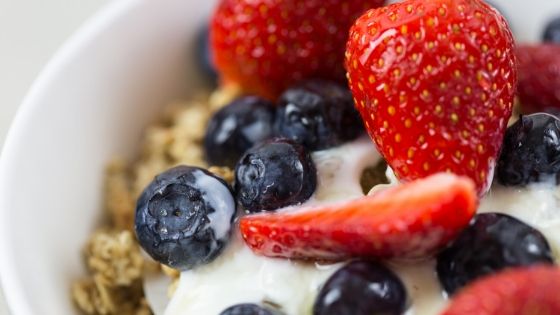I can’t lose weight!!! Does is it sound like YOU? Are you also wondering how to lose 10 pounds in 2 weeks? While there are several diet supplements and diet plans that are claiming to reduce belly fat as fast as within 2 weeks. But the fact is that it totally depends upon your dedication.
I can’t lose weight but How to lose 10 pounds in 2 weeks
Table of Contents
With several lame excuses of being hypothyroidism patient with hormonal imbalance I already convinced myself that I can’t lose weight. I was so desperate to loose weight that I left my full time job assuming that my job is a biggest obstruction in achieving my weight goals but I was wrong. These are all lame excuses. It’s all about dedication. No matter how many excuses you make but you cannot reduce your weight until you get yourself focused to achieve the target.
I did same mistake, I left my job and everyday I was just planning to start this remedy, that workout, to follow that best diet plan and spent several hour on my laptop to know how to lose 10 pounds in 2 weeks or maybe in 3 weeks. Everyday I was coming up with some different methodology to lose weight and than follow for 2 days or 3 days than again same routine.
It’s not end there, for hours I dedicatedly watch several videos on youtube to reduce weight without doing anything :). I was doing so much effort for loosing weight by sitting on my couch and searching something good on my laptop until I understood no matter how much research I will do it all takes my dedication and motivation.
How to lose weight fast in 2 weeks?

There is math to loose weight, in which 70% of your weight depends upon your diet and remaining 30% with workout. And there is no such option for weight loss without exercise atleast not for me. I have taken few steps to lose weight and still following these steps to achieve my targets.
How to lose weight fast in 2 weeks by bringing following changes in your lifestyle:
1- Healthy Eating

I started taking notes of my diet. I was thinking, I am eating healthy but what was healthy in my opinion? Healthy eating doesn’t only mean to stop eating all junks and fast food. No!! Healthy eating is a habit to intake your food with accurate proportion of Carbs, Protein and fat that energize your body and at the same time it helps you in weight reduction.
I tried several diet plan that was available on internet or recommended by my friend and family. But those diet plans were not as per my BMI requirements.
Therefore, in order to plan my diet to lose weight I started looking for some dietitian but to my surprise their consultation Fee plus diet program was way too expensive. Therefore, I gave a try to Custom Keto Diet Plan that was completely based on my BMI and I had to Pay only once for the Plan. Most importantly, diet plan was designed as per my food preferences. This Keto diet plan helps me reduce 11.5 Pounds in 2 weeks which was superb.
What is Keto Diet?
The whole internet is talking about Ketosis diet plan. Keto diet plan is a combination of low carbs, moderate protein and high fat. The idea is to fine-tune nutritional intake in order to send the body into the metabolic state known as ketosis.
Related Article: Fat Burning Smoothies Made with Weight Loss Vegetables and Fruits
2- Sleeping Habit:

Taking a good night sleep is must!! as it improves your internal body health, balances your hormone and keeps liver healthy. Healthy liver means better immune system. As per Science Daily
Losing a single night’s sleep may affect the liver’s ability to produce glucose and process insulin, increasing the risk of metabolic diseases such as hepatic steatosis (fatty liver) and type 2 diabetes.
Moreover, poor sleep is major cause of wight gain and obesity. Recent epidemiological studies suggest that short sleep duration increase the likelihood of obesity by 55% in adults. Therefore, 7 to 8 hours sleep is must to lose weight fast.
3- Morning Walk

Morning walking has several health benefits. It improves your immunity and 30 minutes walks prevents you from heart disease. If you are diabetic patient 30 minutes morning walk may help lower your blood sugar. Apart of all these health benefits 30 minutes daily moderate morning walk can burn upto 150 calories. With combination of Custom Keto Diet Plan and 20 Minutes workout you can lose considerable weight within few weeks.
4- 20 Minutes Daily Workout

In my opinion weight loss without exercise is somehow possible but you will shed water weight only. Your body won’t be toned. Normally it is really hard to reduce belly pouch and love handles. You need to put a lot of efforts. In my case I have stubborn fat around my belly, hips and love handles.
Initially when I lost 10 Pounds no one can even see any difference until I hit the weight machine. I am religiously following my Keto diet plan along with 2 days 45 minutes core yoga and for 3 days I do at home workouts to lose weight that are easily available on youtube.
How long does it take to lose weight
I guess no one can predict exact amount of weight lose in particular time. But in my opinion in the beginning for 03 months our body is under improvement phase. After 03 months our body starts to tone. But with the combination of Keto diet, yoga and fat burning workout you can lose up-to 10 pounds weight within 2 weeks.



